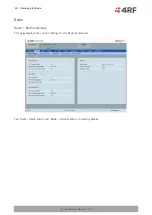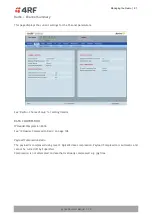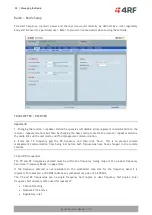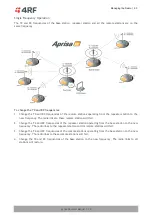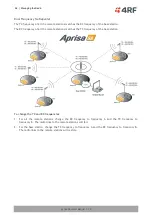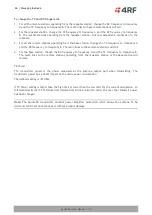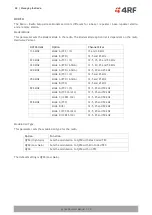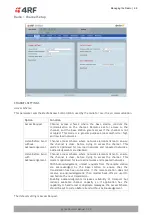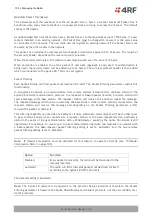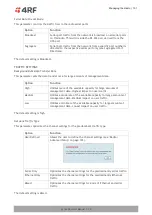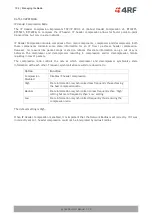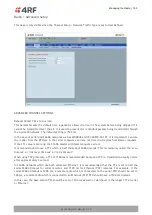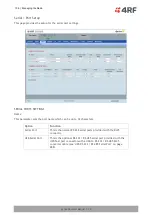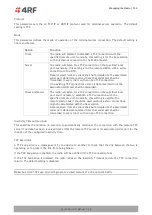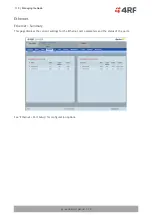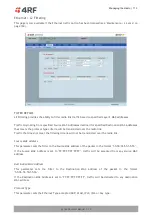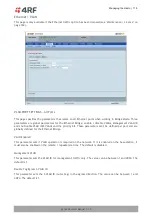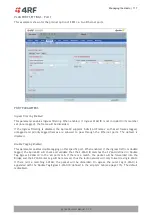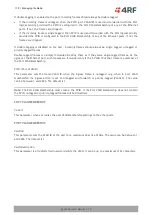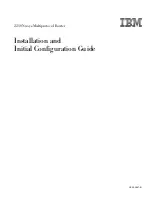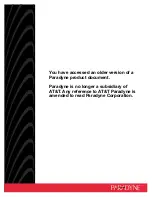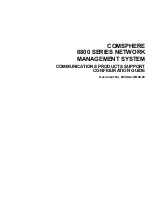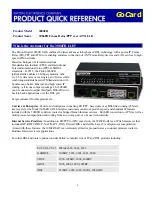
Managing the Radio | 103
Aprisa SRx User Manual 1.3.0
Radio > Advanced Setup
This page is only visible when the Channel Setup > Network Traffic Type is set to User Defined.
ADVANCED CHANNEL SETTINGS
Default Packet Time to Live (ms)
This parameter sets the default time a packet is allowed to live in the system before being dropped if it
cannot be transmitted over the air. It is used to prevent old, redundant packets being transmitted through
the Aprisa SR network. The default setting is 1500 ms.
In the case of serial poll SCADA networks such as MODBUS and IEC 60870.50.101, it is important to ensure
the replies from the RTU are in the correct sequence and are not timed out replies from Master requests.
If the TTL value is too long, the SCADA master will detect sequence errors.
It is recommended to use a TTL which is half the serial SCADA timeout. This is commonly called the ‘scan
timeout’ or ‘link layer time out’ or ‘retry timeout’.
When using TCP protocols, a TTL of 1500 ms is recommended because a TCP re-transmission usually occurs
after approximately 3 second.
In SCADA networks which use both serial and Ethernet, it is recommended that the TTL is set to half the
serial SCADA timeout for serial remotes, and 1500 ms for Ethernet (TCP) remotes. For example, if the
serial SCADA timeout is 1000 ms, a remote radio which is connected to the serial RTU should be set to
500 ms, a remote radio which is connected to an Ethernet (TCP) RTU should have a 1500 ms timeout.
In this case, the base station TTL should be set to 1500 ms as well; or whichever is the longer TTL of serial
or Ethernet.


